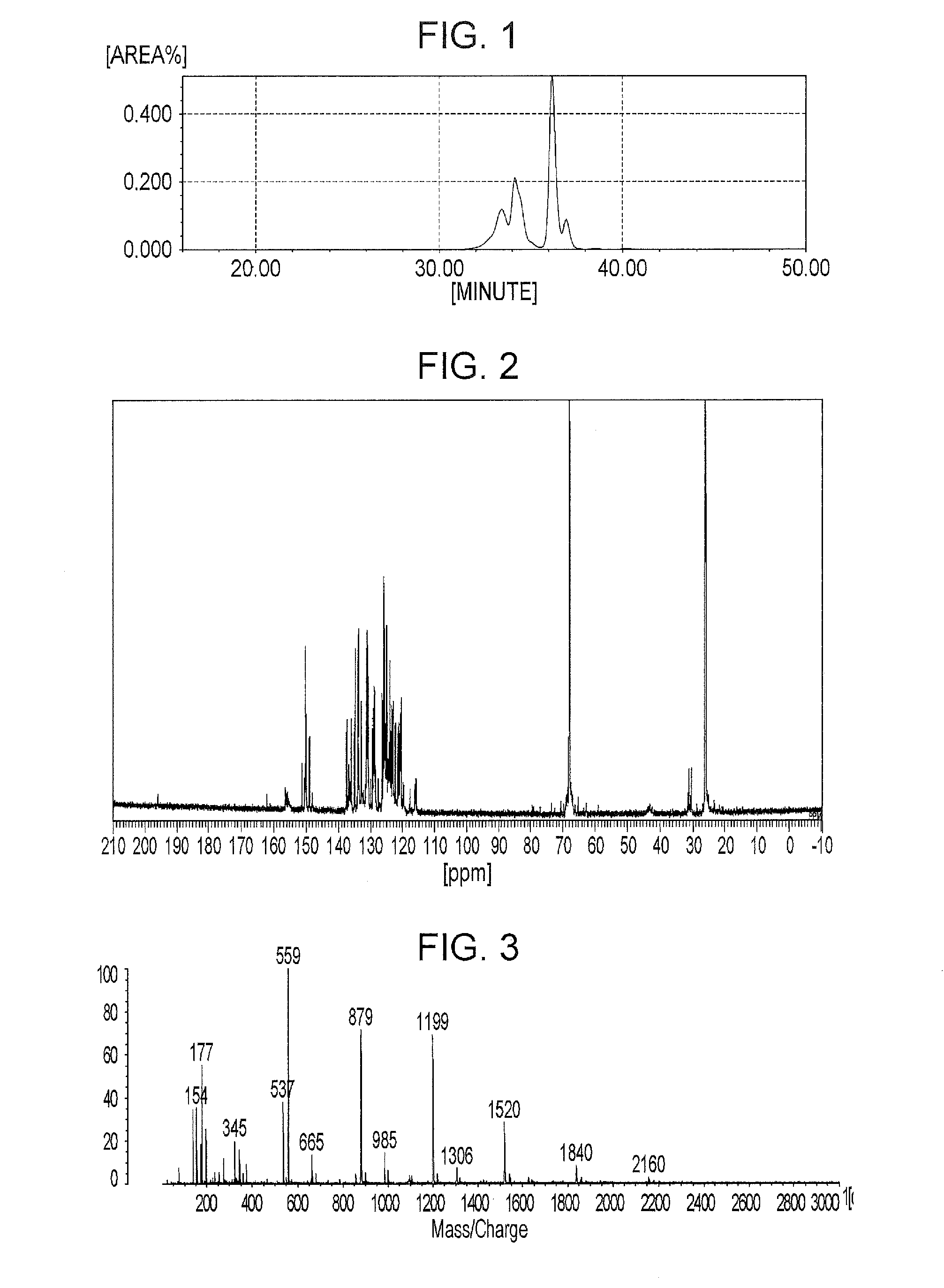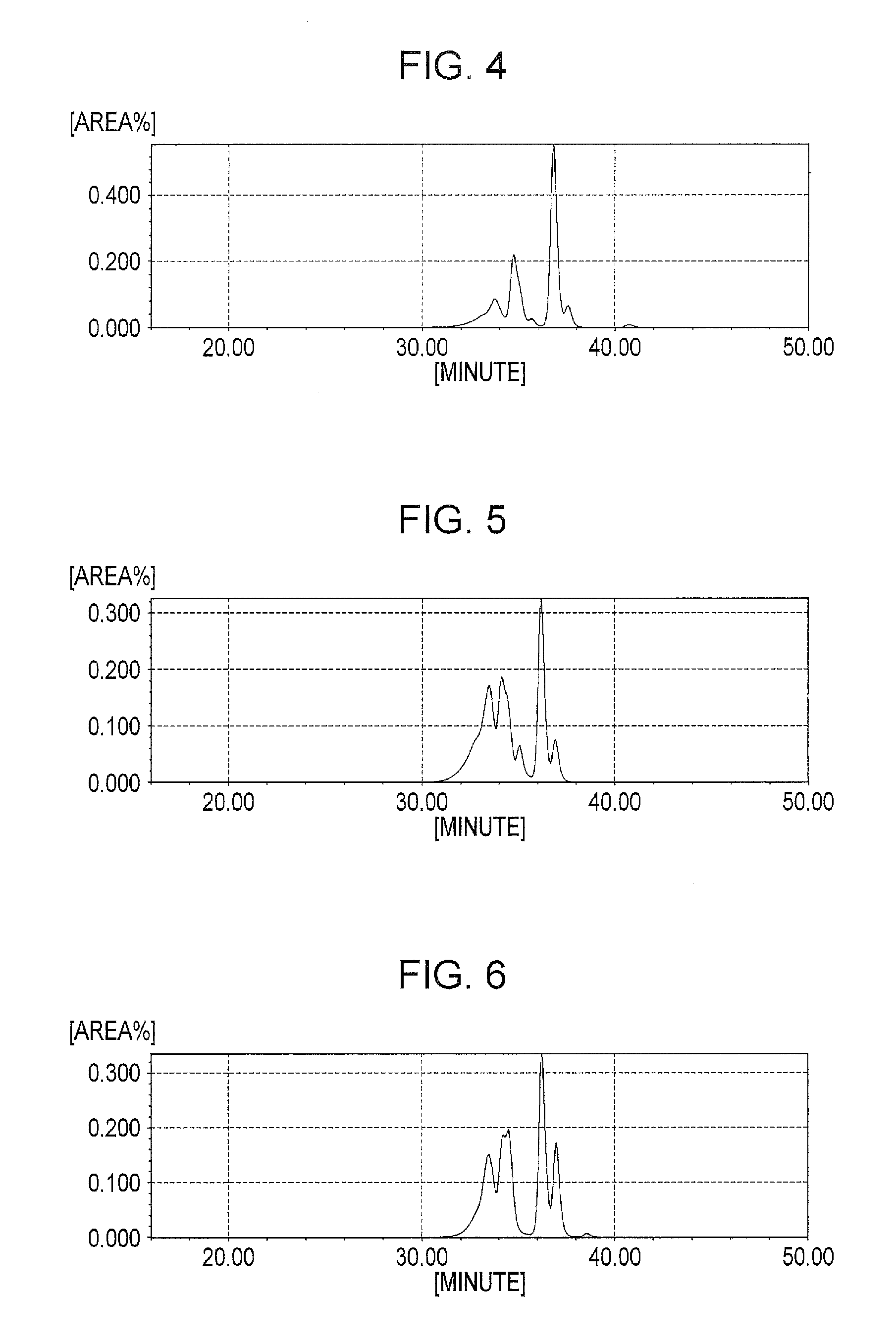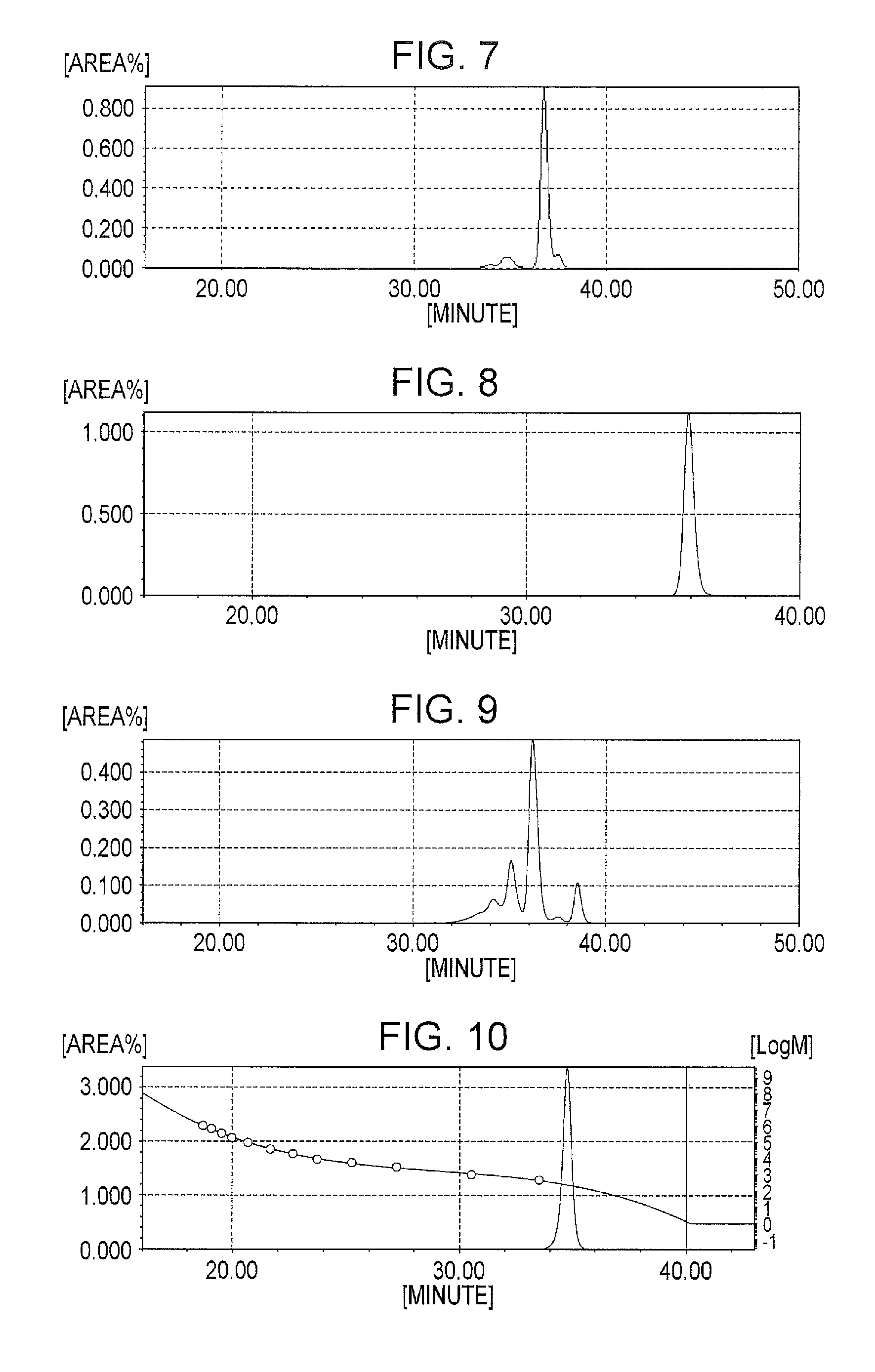Phosphorus-containing oligomer and method for producing the same, curable resin composition and cured product of the same, and printed wiring board
a technology of phosphorus-containing oligomers and printed wiring boards, which is applied in the direction of plastic/resin/waxes insulators, group 5/15 element organic compounds, other chemical processes, etc., can solve the problems of resins not having satisfactory flame retardancy, the reliability of printed wiring boards left to stand at high temperature, and the inability to prepare phosphorus-containing bisphenol in the form of varnish for printed wiring board materials, etc., to achieve high flame retardancy and heat resistance, high solub
- Summary
- Abstract
- Description
- Claims
- Application Information
AI Technical Summary
Benefits of technology
Problems solved by technology
Method used
Image
Examples
example 1
Synthesis of phosphorus-containing oligomer (A-1)
[0157]A flask equipped with a thermometer, a cooling tube, a fractional distillation column, a nitrogen-gas inlet tube, and a stirrer was charged with 122 g (1.0 mol) of 2-hydroxybenzaldehyde, 151.2 g (0.7 mol) of 9,10-dihydro-9-oxa-10-phosphaphenanthrene-10-oxide (hereinafter, abbreviated as “HCA”), and 2.23 g (0.019 mol) of oxalic acid. The mixture was heated to 120° C. to allow the reaction to proceed for one hour: Subsequently, 172.8 g (0.8 mol) of HCA was added to the flask, and the mixture was heated to 180° C. to allow the reaction to proceed for three hours. Water was then removed under heating and reduced pressure to obtain 410 g of a phosphorus-containing oligomer (A-1) having a structural unit represented by structural formula below.
[0158]
[0159]The obtained phosphorus-containing oligomer had a softening point of 138° C. (B&R method), a melt viscosity (measurement method: ICI viscometer method, measurement temperature: 180° ...
example 2
Synthesis of Phosphorus-Containing Oligomer (A-2)
[0160]A flask equipped with a thermometer, a cooling tube, a fractional distillation column, a nitrogen-gas inlet tube, and a stirrer was charged with 122 g (1.0 mol) of o-hydroxybenzaldehyde, 108 g (0.5 mol) of HCA, and 2.23 g (0.019 mol) of oxalic acid. The mixture was heated to 120° C. to allow the reaction to proceed for one hour. Subsequently, 216 g (1.0 mol) of HCA was added to the flask, and the mixture was heated to 180° C. to allow the reaction to proceed for three hours. Water was then removed under heating and reduced pressure to obtain 415 g of a phosphorus-containing oligomer (A-2) having a structural unit represented by structural formula below.
[0161]
[0162]The obtained phosphorus-containing oligomer had a softening point of 130° C. (B&R method), a melt viscosity (measurement method: ICI viscometer method, measurement temperature: 180° C.) of 72 dPa·s, a hydroxyl equivalent of 430 g / eq, and a phosphorus content of 10.5 ma...
example 3
Synthesis of Phosphorus-Containing Oligomer (A-3)
[0163]A flask equipped with a thermometer, a cooling tube, a fractional distillation column, a nitrogen-gas inlet tube, and a stirrer was charged with 122 g (1.0 mol) of o-hydroxybenzaldehyde, 129.6 g (0.6 mol) of HCA, and 3.81 g (0.032 mol) of oxalic acid. The mixture was heated to 120° C. to allow the reaction to proceed for one hour. Subsequently, 129.6 g (0.6 mol) of HCA was added to the flask, and the mixture was heated to 180° C. to allow the reaction to proceed for three hours. Water was then removed under heating and reduced pressure to obtain 415 g of a phosphorus-containing oligomer (A-3) having a structural unit represented by structural formula below.
[0164]
[0165]The obtained phosphorus-containing oligomer had a softening point of 150° C. (B&R method), a melt viscosity (measurement method: ICI viscometer method, measurement temperature: 180° C.) of 105 dPa·s, a hydroxyl equivalent of 363.2 g / eq, and a phosphorus content of ...
PUM
| Property | Measurement | Unit |
|---|---|---|
| melting point | aaaaa | aaaaa |
| flow rate | aaaaa | aaaaa |
| temperature | aaaaa | aaaaa |
Abstract
Description
Claims
Application Information
 Login to View More
Login to View More - R&D
- Intellectual Property
- Life Sciences
- Materials
- Tech Scout
- Unparalleled Data Quality
- Higher Quality Content
- 60% Fewer Hallucinations
Browse by: Latest US Patents, China's latest patents, Technical Efficacy Thesaurus, Application Domain, Technology Topic, Popular Technical Reports.
© 2025 PatSnap. All rights reserved.Legal|Privacy policy|Modern Slavery Act Transparency Statement|Sitemap|About US| Contact US: help@patsnap.com



